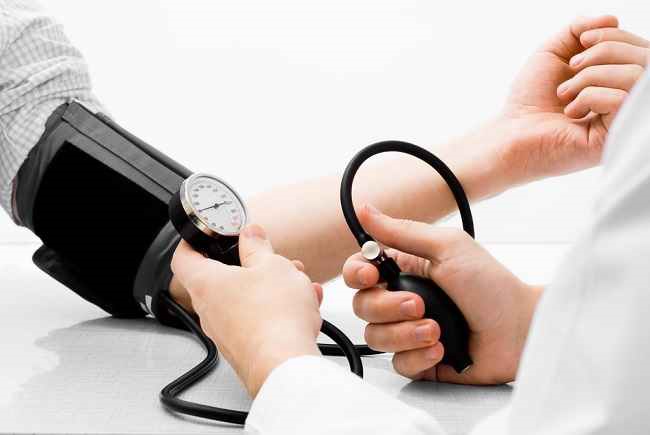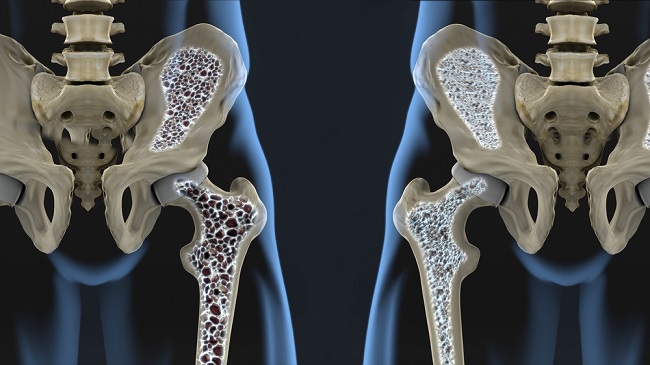Felodipine is a drug to lower blood pressure in people with hypertension. Controlled blood pressure will reduce the risk of complications, such as heart attack, stroke, or kidney disease.
Felodipine is a calcium antagonistcalcium channel blockers) which works by inhibiting and controlling the flow of calcium into heart cells and blood vessels, so that blood vessels are more relaxed and blood flow is smoother.

That way, the supply of blood and oxygen to the heart will increase, and the workload of the heart will decrease.
Felodipine trademark: -
What is Felodipine
| group | Prescription drugs |
| Category | Calcium antagonist antihypertensive drugs |
| Benefit | Lowering blood pressure in hypertension |
| Used by | Adults and seniors |
| Felodipine for pregnant and lactating women | Category C:Animal studies have shown adverse effects on the fetus, but there are no controlled studies in pregnant women. Drugs should only be used if the expected benefit outweighs the risk to the fetus. Felodipine may be absorbed into breast milk. If you are breastfeeding, do not use this medicine without consulting your doctor first |
| Drug form | Tablet |
Precautions Before Taking Felodipine
Felodipine should not be taken carelessly. The following are things you need to pay attention to before taking felodipine:
- Do not take felodipine if you are allergic to this drug. Be sure to always tell your doctor about any allergies you have.
- Tell your doctor if you have or have had liver disease, edema, kidney disease, or heart disease, including heart failure.
- Do not drive a vehicle or operate equipment that requires vigilance while taking felodipine, as this medicine may cause dizziness.
- Tell your doctor if you are pregnant, breastfeeding, or planning a pregnancy.
- Tell your doctor if you are taking any other medicines, including supplements or herbal products.
- See your doctor right away if you have an allergic drug reaction, serious side effect, or overdose after taking felodipine.
Dosage and Directions for Use of Felodipine
The dose of felodipine is determined based on the age, condition of the patient, and the body's response to the drug. The following are the dosages of felodipine based on their intended use:
Condition: Hypertension treatment
- Mature: The initial dose is 5 mg per day. The dose can be adjusted according to the patient's condition, the dosage range is 2.5–10 mg per day. The dose can be adjusted based on the patient's response to the drug.
- seniors: The initial dose is 2.5 mg per day.
Condition: Treatment of angina pectoris
- Mature: The initial dose is 5 mg per day. The dose may be increased to 10 mg per day as needed.
- seniors: Initial dose is 2.5 mg per day.
How to Take Felodipine Correctly
Use felodipine as recommended by the doctor and don't forget to read the information on the drug packaging. Do not increase or decrease the dose, and do not take the drug more than the recommended timeframe.
Felodipine can be taken before or after meals. Take felodipine tablets with a glass of water. Do not crush, chew, or split this medication, as this may affect the effectiveness of the drug.
Make sure that there is sufficient time between one dose and the next. Try to take felodipine at the same time every day for maximum treatment.
In order for blood pressure to be more controlled, in addition to taking antihypertensive drugs, you must also lead a healthy lifestyle, such as implementing a low-salt diet, maintaining an ideal body weight, exercising regularly, and quitting smoking.
Carry out regular check-ups according to the schedule given by the doctor, so that the condition and response to therapy can be monitored.
Store felodipine at room temperature, and avoid direct sunlight. Keep medicine out of reach of children.
Felodipine Interactions with Other Drugs
There are several drug interactions that can occur when felodipine is used with other medicines, including:
- Increased levels of felodipine when used with cimetide, erythromycin, itraconazole, or ritonavir
- Decreased felodipine levels when used with phenytoin, carbamazepine, rifampin, efavirenz, or barbiturate drugs
- Increased effectiveness of tacrolimus
Felodipine Side Effects and Dangers
Some of the side effects that can appear after taking felodipine are:
- Headache
- Dizzy
- Stomach ache
- Feeling hot or stifling
Check with your doctor if the side effects above do not subside. Immediately see a doctor if there is an allergic reaction to the drug which can be characterized by symptoms such as the appearance of an itchy and swollen rash, swollen eyes and lips, or difficulty breathing.
In addition, you should also see a doctor immediately if you experience more serious side effects, such as:
- Chest pain
- Hard to breathe
- Weight gain fast
- Fainted until you want to faint
- Swelling of the arms, hands, feet, or legs
- Heart rate feels fast or irregular
- Swollen gums









